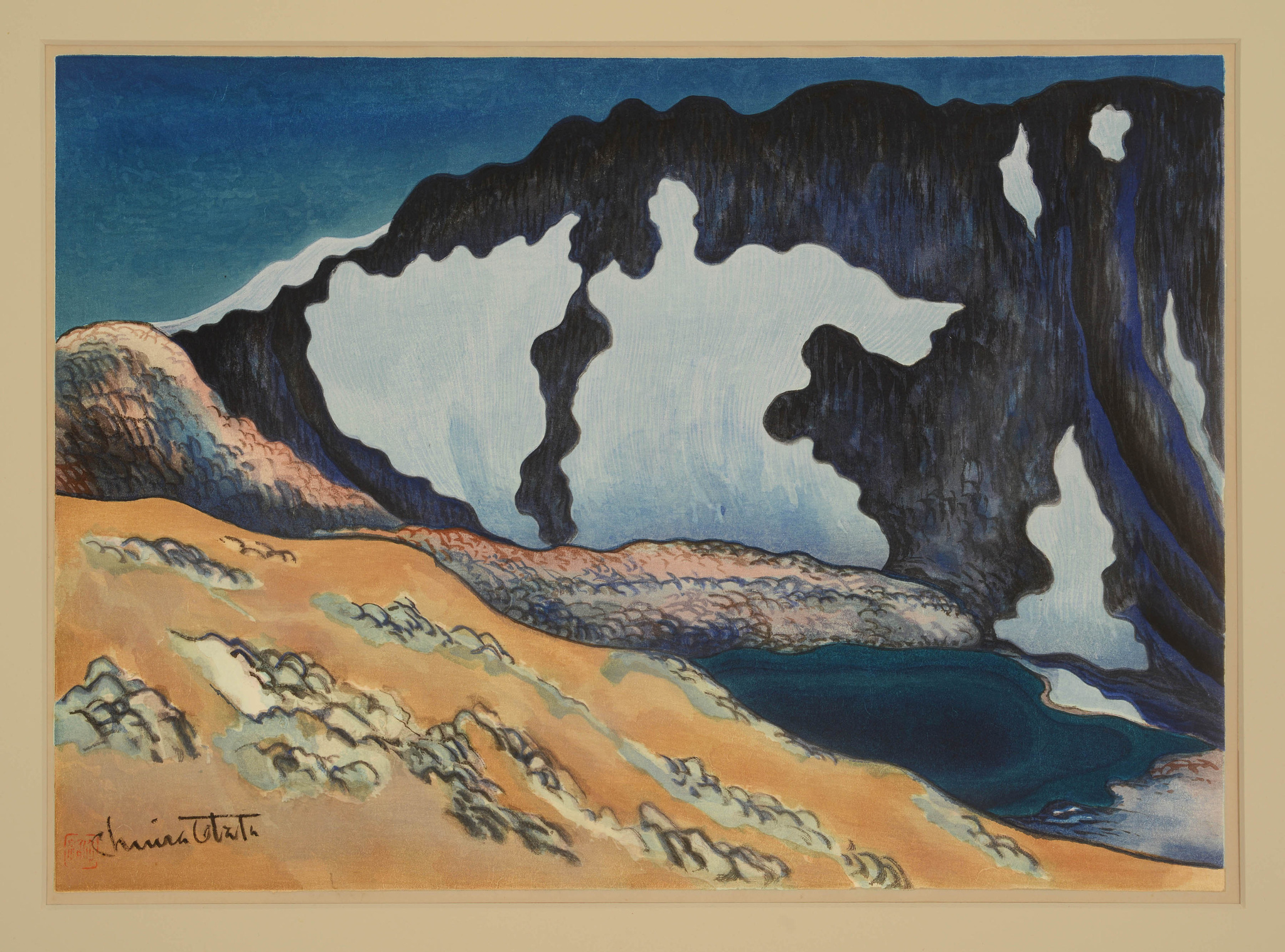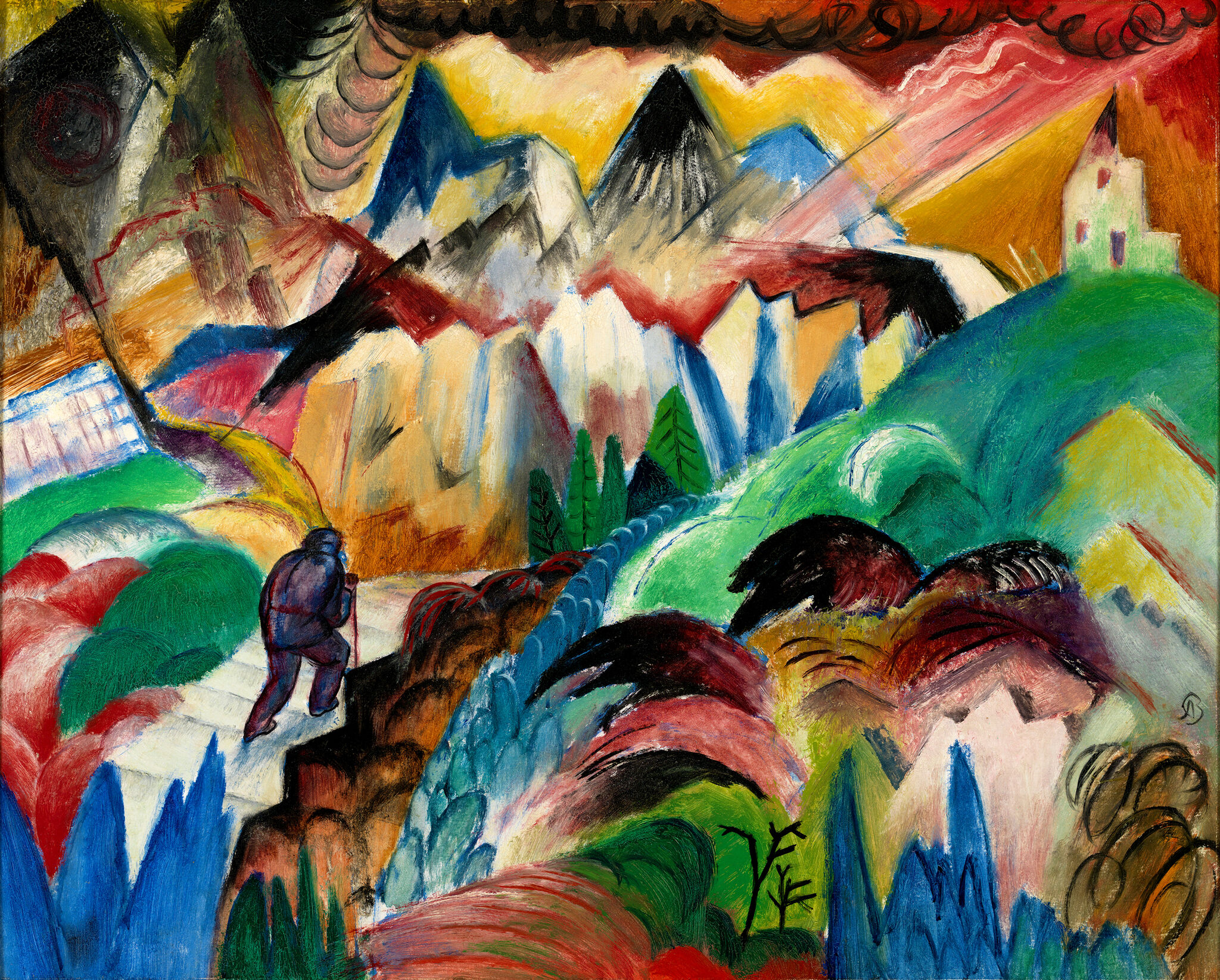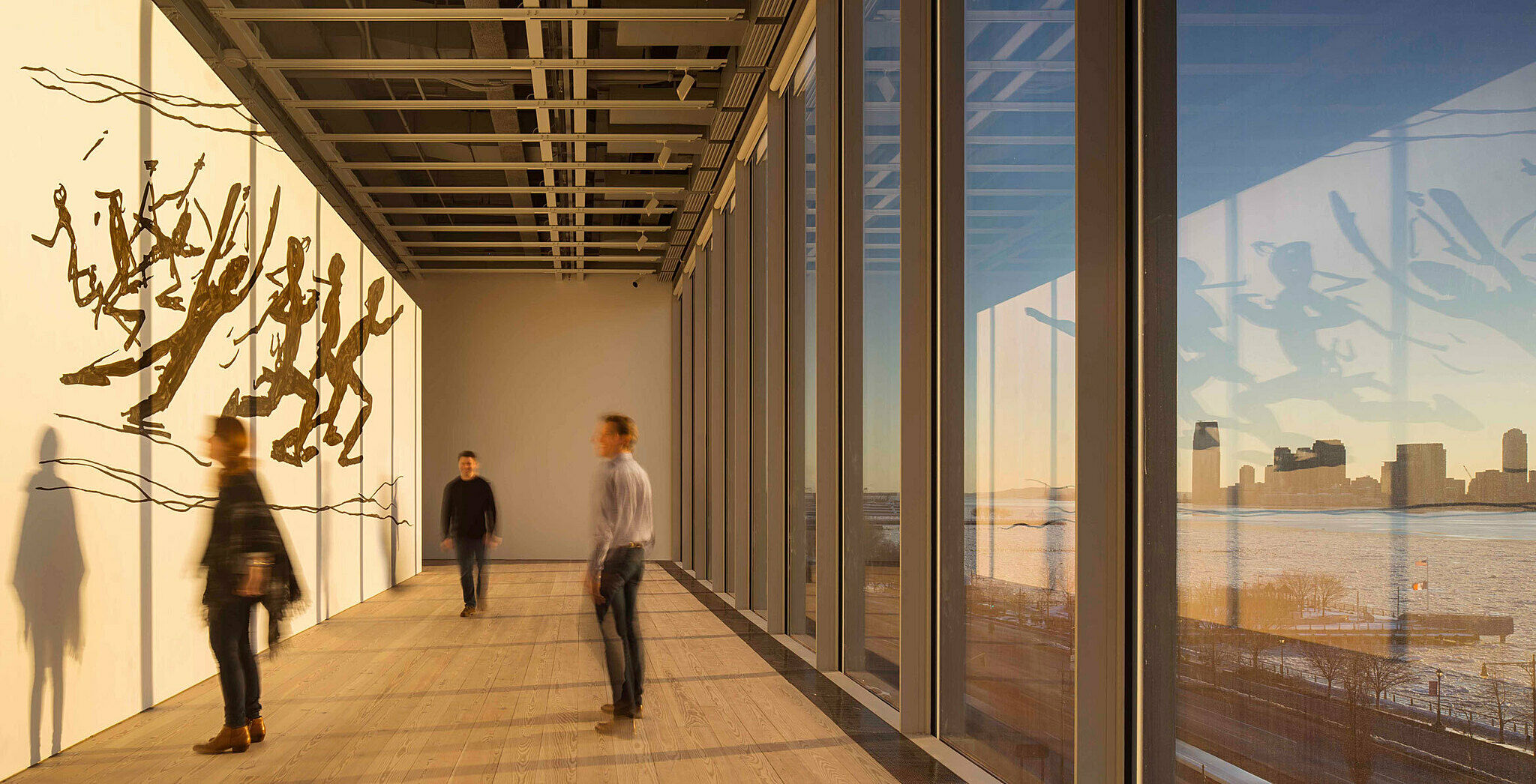Not on view
Date
1930
Classification
Prints
Medium
Woodblock print
Dimensions
Sheet: 13 1/4 × 17 15/16in. (33.7 × 45.6 cm) Image: 11 × 15 11/16in. (27.9 × 39.8 cm)
Accession number
2015.17
Series
World Landscape Series “America”
Credit line
Whitney Museum of American Art, New York; gift of Gyo Obata
Rights and reproductions
© Gyo Obata
Audio
-
Chiura Obata, Silence, Last Twilight on an Unknown Lake
In At the Dawn of a New Age: Early Twentieth-Century American Modernism (Spanish)
0:00
Chiura Obata, Silence, Last Twilight on an Unknown Lake
0:00
Narrator: En el verano de 1927, el artista Chiura Obata pasó seis semanas acampando en el Parque Nacional Yosemite, haciendo bocetos y acuarelas. Un año después, escribió sobre el viaje en un periódico en lengua japonesa de California. Sus palabras demuestran que se sintió inspirado tanto por los detalles del paisaje como por la grandeza de Yosemite. Escribió:
“Adornando las alturas de la Sierra están las flores silvestres. Cada tres a siete días, florecen en blanco, rojo, amarillo y morado, y rebosan en un caleidoscopio de belleza y nos regalan incontables enseñanzas y valiosas experiencias. Las semillas y las raíces de las flores silvestres encuentran un lecho de tierra entre las rocas. Durante ocho o nueve meses al año, yacen pacientemente enterradas bajo varios metros de nieve. En la cálida luz de julio y agosto, brotan hacia el vasto cielo”.
Obata había emigrado a Estados Unidos en 1903. Cuando visitó Yosemite por primera vez en 1927, ya se había convertido en una figura prominente en el mundo del arte de San Francisco. Realizó esta xilografía como parte de un portafolio más amplio durante un viaje de regreso a Japón en 1930. En parte, se basó en las prácticas tradicionales japonesas de grabado en madera. Al mismo tiempo, recreó la libertad improvisada de sus bocetos originales en acuarela, con un enfoque atmosférico que estaba más relacionado con el modernismo occidental. Desarrolló técnicas innovadoras para tallar la textura de pinceladas en las planchas de madera. El proceso era bastante complejo, ya que cada una de las sutiles gradaciones de color de la obra se realizaba con diferentes planchas de madera por color.
El artículo de Obata aquí citado fue traducido en el libro Obata's Yosemite, publicado por la Yosemite Conservancy.
-
Chiura Obata, Silence, Last Twilight on an Unknown Lake
In At the Dawn of a New Age: Early Twentieth-Century American Modernism
0:00
Chiura Obata, Silence, Last Twilight on an Unknown Lake
0:00
Narrator: In the summer of 1927, the artist Chiura Obata spent six weeks camping in Yosemite National Park, sketching and making watercolors. A year later, he wrote about the trip in a Californian Japanese-language newspaper. His words show that he was as inspired by the details of the landscape as he was by Yosemite’s grandeur. He wrote:
“Adorning the heights of the Sierra range are the wildflowers. Every three to seven days they bloom in white, red, yellow, and purple, bursting out in a kaleidoscope of beauty and giving us untold lessons and valuable experiences. The seeds and roots of the wildflowers find a bed of ground in between the rocks. For eight or nine months of the year they patiently lie buried under several feet of snow. In the warm light of July and August they burst out toward the wide sky.”
Obata had emigrated to the United States in 1903. By his first visit to Yosemite in 1927, he had become a prominent figure in the San Francisco art world. He made this woodblock print as part of a larger portfolio while on a return trip to Japan in 1930. In part, he drew on traditional Japanese woodblock printing practices. At the same time, he re-created the improvisatory freedom of his original watercolor sketches—taking an atmospheric approach that was more associated with western modernism. He developed innovative techniques for carving the appearance of brushwork into the wooden printing blocks. The process was quite complex, with each of the work’s subtle color gradations made up by different blocks of wood for each color.
The article by Obata that we’ve quoted here was translated in the book Obata’s Yosemite, published by the Yosemite Conservancy.
Exhibitions
Installation photography
-
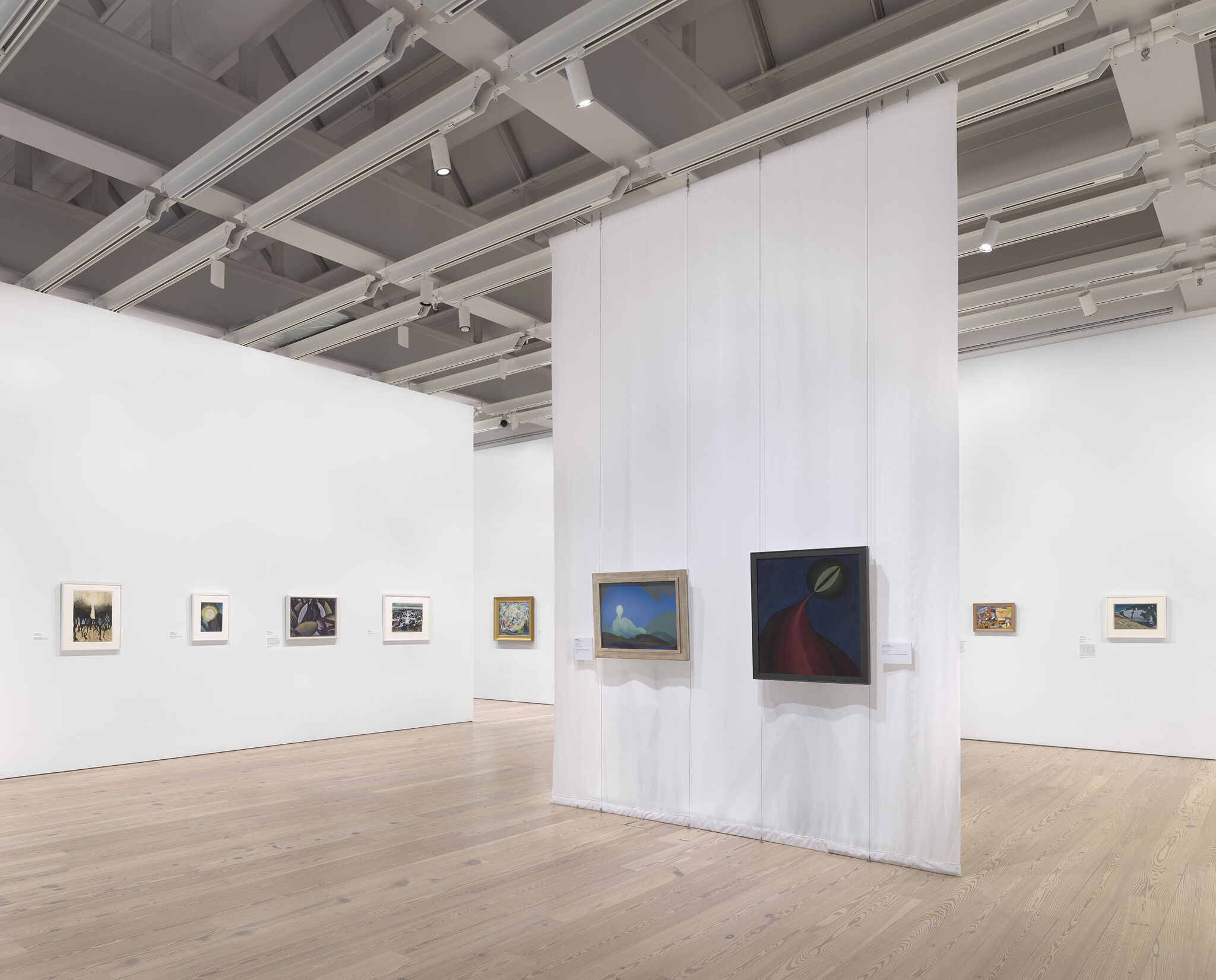

Installation view of At the Dawn of a New Age: Early Twentieth-Century American Modernism (Whitney Museum of American Art, New York, May 4, 2022-January 2023). From left to right: Charles Burchfield, Sunlight in Forest, 1916; Oscar Bluemner, #8. June – Moon, 1927; Arthur Dove, Plant Forms, 1912; John Marin, White Horses – Sea Movement off Deer Isle, 1926; Joseph Stella, Der Rosenkavalier, 1913-14; Agnes Pelton, Sea Change, 1931; Henrietta Stone, Trail of Life, 1923; Yun Gee, Street Scene, 1926; Chiura Obata, Silence, Last Twilight on an Unknown Lake, Johnson Peak, 1930. Photograph by Ron Amstutz
From the exhibition At the Dawn of a New Age: Early Twentieth-Century American Modernism
-
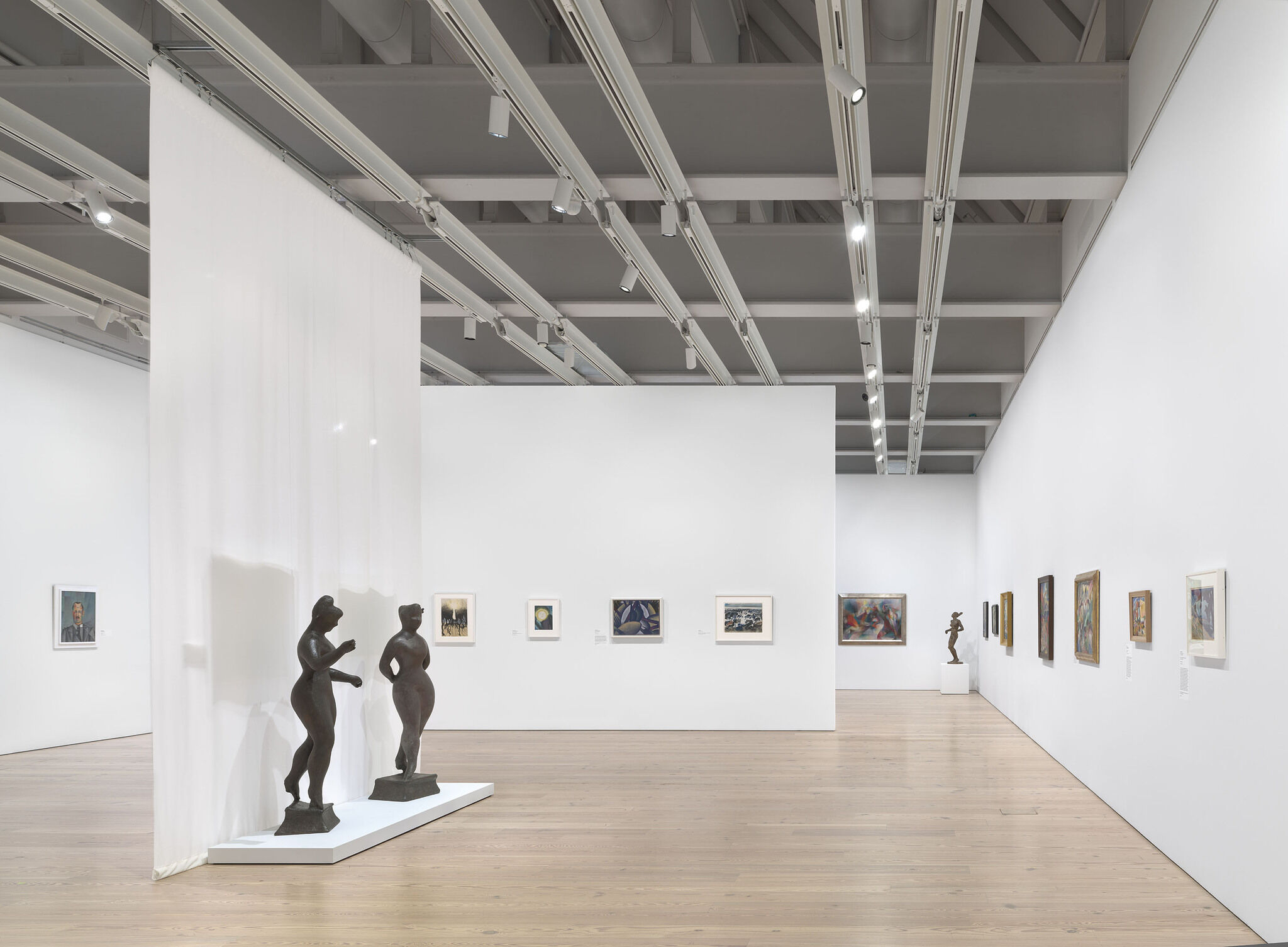

Installation view of At the Dawn of a New Age: Early Twentieth-Century American Modernism (Whitney Museum of American Art, New York, May 4, 2022–January 2023). From left to right: Charles G. Shaw, Self Portrait, c. 1930; Elie Nadelman, Standing Female Figure, c. 1925-26; Elie Nadelman, Standing Female Figure, c. 1925-26; Charles Burchfield, Sunlight in Forest, 1916; Oscar Bluemner, #8. June - Moon, 1927; Arthur Dove, Plant Forms, c. 1912; John Marin, White Horses - Sea Movement off Deer Isle, Maine, 1926; Stanton Macdonald-Wright, Oriental - Synchromy in Blue-Green, 1918; Richmond Barthé, African Dancer, 1933; Jay Van Everen, Abstract Landscape, c. 1924; Arthur B. Davies, Day of Good Fortune, c. 1914; Joseph Stella, Der Rosenkavalier, 1913-14; Carl Newman, Untitled (Bathers), c. 1917; Albert Bloch, Mountain, 1916; Yun Gee, Street Scene, 1926; Chiura Obata, Silence, Last Twilight on an Unknown Lake, Johnson Peak, 1930. Photograph by Ron Amstutz
From the exhibition At the Dawn of a New Age: Early Twentieth-Century American Modernism
-
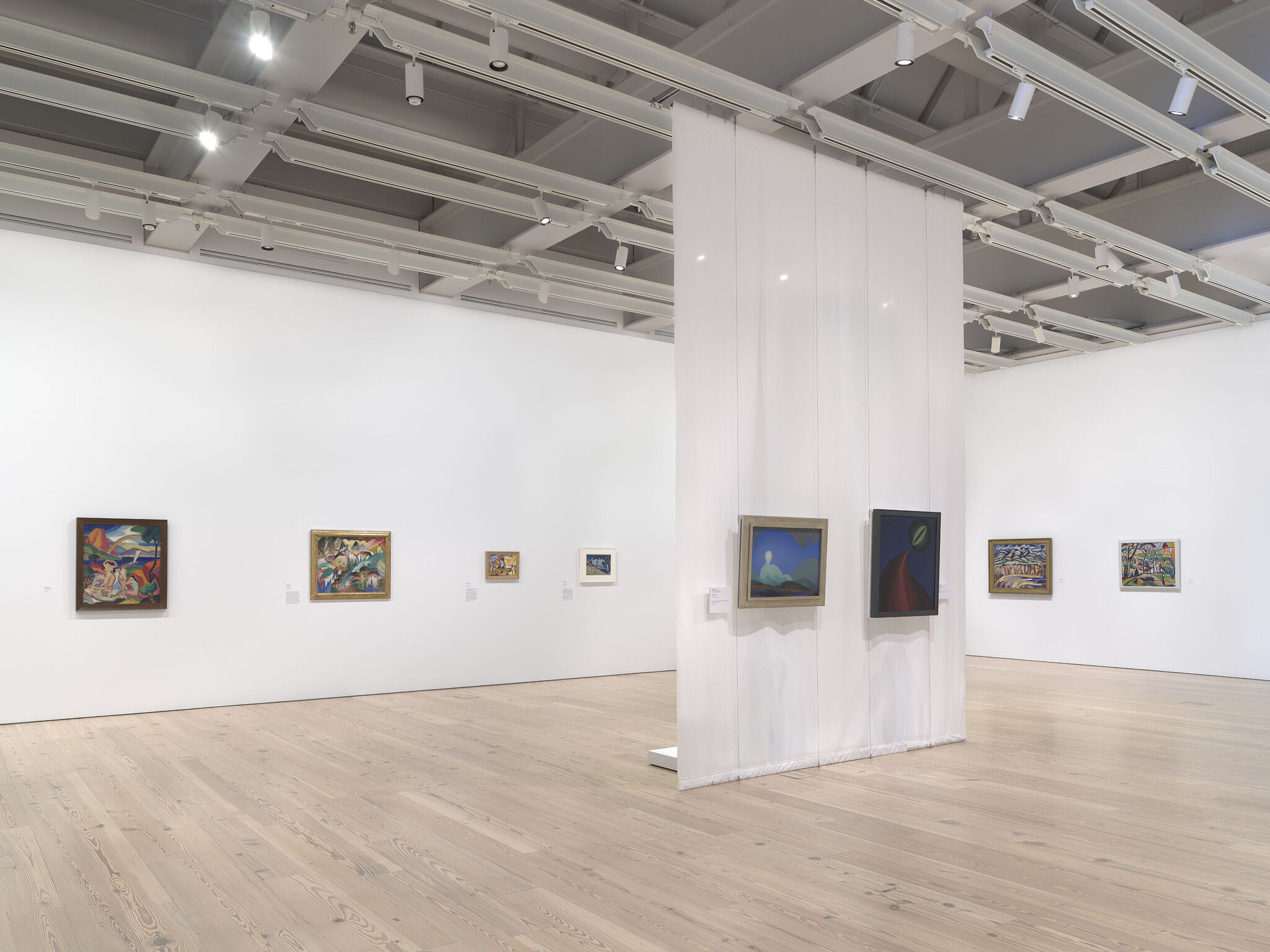

Installation view of At the Dawn of a New Age: Early Twentieth-Century American Modernism (Whitney Museum of American Art, New York, May 4, 2022-January 2023). From left to right: Carl Newman, Untitled (Bathers), c. 1917; Albert Bloch, Mountain, 1916; Yun Gee, Street Scene, 1926; Chiura Obata, Silence, Last Twilight on an Unknown Lake, Johnson Peak, 1930; Agnes Pelton, Sea Change, 1931; Henrietta Shore, Trail of Life, c. 1923; Marsden Hartley, Landscape, New Mexico, 1919-20; Henry Lyman Sayen, Valley Falls II, c. 1915. Photograph by Ron Amstutz
From the exhibition At the Dawn of a New Age: Early Twentieth-Century American Modernism

